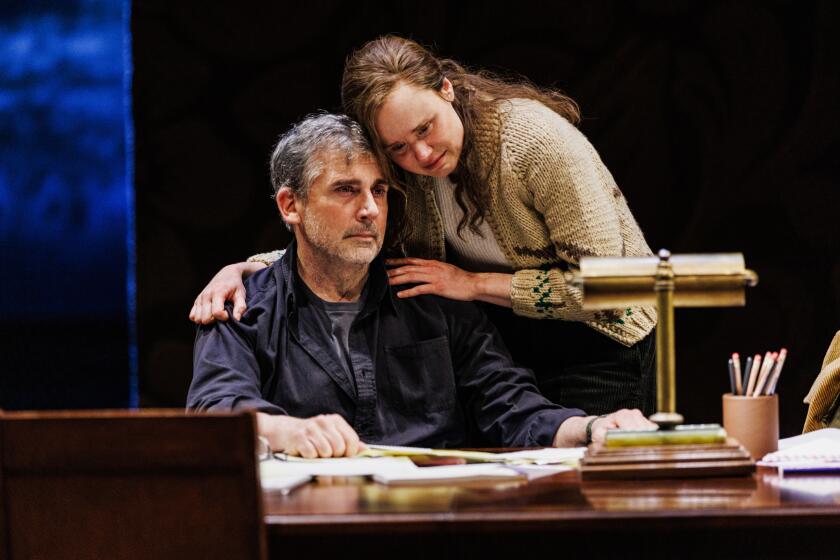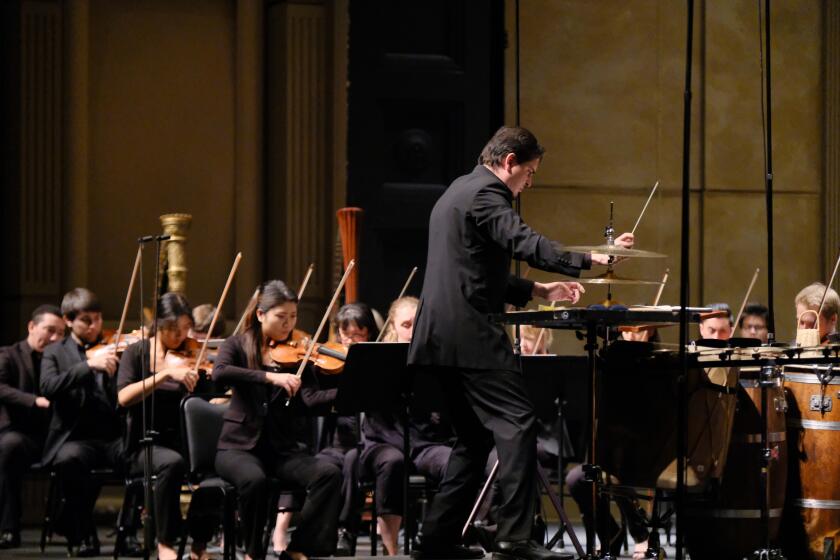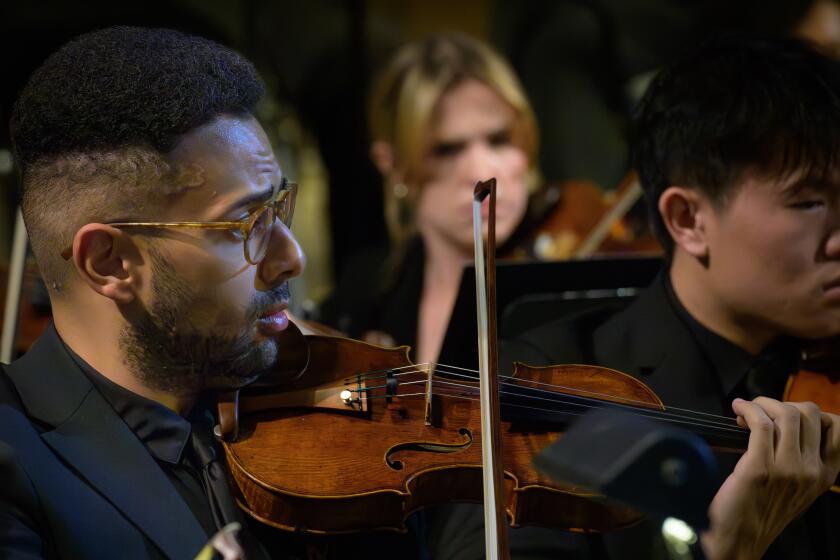Morris against Mozart
Mark Morris’ “Mozart Dances” represents a serious challenge to this modern dance choreographer’s vaunted reputation for musicality. Performed Saturday at the Dorothy Chandler Pavilion as part of the Dance at the Music Center series, the work might even be taken for Morris’ I Ching ballet.
It looked as if it were assembled from predetermined bits and gestures that were roughly overlaid on three major Mozart works rather than inspired by them. The pieces fit only because the music was chopped up and little attention was paid to its lyrical or emotional content.
The three works were the Piano Concerto No. 11, the Sonata for Two Pianos in D and the Piano Concerto No. 27, the composer’s last, ineffable venture in the genre. The corresponding dance sections were titled “Eleven” (danced mostly by the women of the Mark Morris Dance Group), “Double” (mostly the men) and “Twenty-Seven” (the full company).
There may have been a dozen or more recurring gestures, many of which were announced almost at the beginning. These included hands clasped behind the head; an index finger held upright; a questioning look over the shoulder; and a wavy, downward-floating hand gesture, as each dancer was tracing the fall of a leaf.
Other motifs were crisp, swaggering arms accompanied by a flat-footed march; arms suddenly thrust sideways; playful, upward flicks of the hands; abrupt stops; short, spinning jumps; and backward falls to the ground. Sometimes these came neatly on the beat or at the end of phrases, but more frequently they interrupted Mozart’s melodic lines and ignored telling shifts between light and dark.
If too much of this seems more like cataloging the trees than describing the forest, chalk it up to the forest’s looking increasingly repetitive, predictable and bland.
The three sections were each largely abstract ensemble pieces, although Lauren Grant, petite but powerful, dominated the heavy-footed “Eleven” and Joe Bowie and Noah Vinson were the leads in the more airy “Double.” Many of the 19 members of the company were showcased in the playful “Twenty-Seven.”
A kind of story, nevertheless, was suggested in “Double,” in which an outsider (Vinson) was absorbed into the group but apparently had to die anyway. This hint of tragedy resurfaced at the very end of the piece when the men and women froze in separated clumps reaching out to one another across a void. But by then the disparity between what was seen and what was heard was insurmountable.
That problem had surfaced far earlier. The intimate piano solo that opened the slow movement of Concerto No. 27, for instance, nearly drowned under the weight of 12 dancers onstage. Forget about their awkward poses to this tender music.
Garrick Ohlsson was the fluent soloist in the concertos; he added some embellishments but hardly had opportunity to probe the scores. Yoko Nozaki proved a sympathetic partner in the Sonata.
Jane Glover conducted a pickup orchestra resourcefully.
The backdrops were a series of three large-scale abstract painterly swabs by Howard Hodgkin, lighted uninterestingly by James F. Ingalls. Martin Pakledinaz designed the costumes -- unattractive black tulle dresses over bra tops and briefs for the women; loose open shirts and black clam-diggers for the men. Everyone was in white for the last section, doubtless a symbolic shift.
There are advocates of the work who have seen it several times, either live (it premiered last year at New York’s Lincoln Center Mostly Mozart Festival) or through a later PBS broadcast (which, incidentally, was not shown in Los Angeles). But a first-time viewer might be pardoned for wondering what all the fuss was about.
--
More to Read
The biggest entertainment stories
Get our big stories about Hollywood, film, television, music, arts, culture and more right in your inbox as soon as they publish.
You may occasionally receive promotional content from the Los Angeles Times.






